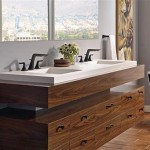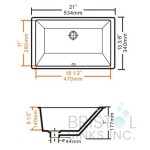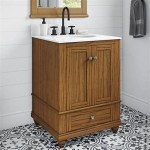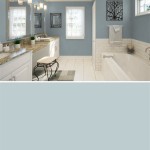Best Sponges for Cleaning Bathrooms
Maintaining a clean and hygienic bathroom is essential for both health and well-being. Sponges are indispensable tools for effective bathroom cleaning, offering versatile and efficient ways to tackle dirt, grime, and bacteria. Choosing the right sponges for your bathroom cleaning needs is crucial to ensure optimal results without damaging surfaces or promoting germ growth. Here's a comprehensive guide to the best sponges for cleaning bathrooms, covering their types, features, and usage recommendations.
Types of Sponges for Bathroom Cleaning
- Cellulose Sponges: Made from plant-based cellulose, these sponges are biodegradable and ideal for general bathroom cleaning. They are absorbent, durable, and can be washed and reused multiple times.
- Synthetic Sponges: Made from synthetic materials like polyurethane, these sponges are highly absorbent and effective for removing tough stains and grime. They are also resistant to mold and mildew, making them suitable for use in humid bathroom environments.
- Natural Sponges: Derived from marine animals, natural sponges are soft and gentle, making them ideal for delicate surfaces like porcelain sinks and glass shower doors. However, they are not as durable as cellulose or synthetic sponges and require more frequent replacement.
- Microfiber Sponges: Featuring tiny fibers, microfiber sponges are highly effective at trapping dirt, dust, and bacteria. They are ideal for cleaning bathroom fixtures and surfaces, leaving them streak-free and sparkling.
- Scouring Sponges: Designed with abrasive surfaces, scouring sponges are suitable for removing stubborn stains, soap scum, and hard water deposits. They should be used with caution on delicate surfaces to avoid scratches.
Features to Consider When Choosing Bathroom Sponges
When selecting sponges for bathroom cleaning, consider the following features to ensure optimal performance and durability:
- Absorbency: Opt for sponges that are highly absorbent to effectively soak up water and cleaning solutions, ensuring efficient cleaning and reducing drying time.
- Durability: Choose sponges that can withstand repeated use and washing without breaking down or losing their shape. This will save you money in the long run.
- Resistance to Mold and Mildew: Bathrooms are prone to moisture buildup, so it's essential to choose sponges that resist the growth of mold and mildew. This will prevent the spread of bacteria and maintain a hygienic environment.
- Size and Shape: Consider the size and shape of the sponges in relation to the surfaces you need to clean. Smaller sponges are ideal for tight spaces and delicate areas, while larger sponges are suitable for larger surfaces and general cleaning.
Usage Recommendations for Different Bathroom Surfaces
Different bathroom surfaces require specific cleaning techniques to avoid damage or promote germ growth. Here are some usage recommendations for different sponges on common bathroom surfaces:
- Sinks and Countertops: Use cellulose sponges or microfiber sponges with mild cleaning solutions to gently clean these surfaces. Avoid using scouring sponges or harsh chemicals that could damage the finish.
- Showers and Tubs: Synthetic sponges or microfiber sponges are ideal for cleaning showers and tubs. Their durability and resistance to mold and mildew make them suitable for tackling soap scum and dirt buildup.
- Toilets: Use dedicated scouring sponges or toilet brushes for cleaning toilets. These sponges should be regularly replaced to prevent the spread of bacteria.
- Mirrors and Glass Surfaces: Microfiber sponges or natural sponges are gentle on glass surfaces, leaving them streak-free and sparkling. Avoid using abrasive scouring sponges that could scratch the glass.
- Tiles and Grout: Synthetic sponges or scouring sponges with a mild bleach solution are effective for cleaning tiles and grout. Use a toothbrush or small brush for grout lines.
Proper Care and Maintenance of Bathroom Sponges
To ensure the longevity and hygiene of your bathroom sponges, follow these care and maintenance tips:
- Rinse and Dry: After each use, thoroughly rinse your sponges with clean water and squeeze out excess moisture. Allow them to air dry completely to prevent the growth of bacteria.
- Wash Regularly: Regularly wash your sponges in the washing machine or by hand using hot water and mild detergent. This will remove dirt, grime, and bacteria buildup.
- Replace Regularly: Sponges should be replaced every few weeks or as soon as they become discolored, frayed, or start to smell musty. This will prevent the spread of germs and ensure optimal cleaning performance.
By following these guidelines and choosing the right sponges for your bathroom cleaning needs, you can maintain a clean, hygienic, and spa-like bathroom that is free of dirt, grime, and bacteria. Remember to regularly care for and replace your sponges to ensure their effectiveness and longevity.

The 11 Best Kitchen Sponges Of 2024 Reviews By Your Digs

Which Type Of Cleaning Sponge Should You Use

Bathroom Sponge Scourer Spontex

Best Sponges With Handles For Kitchen And Bathroom Cleaning

Microfibre Cloths Bathroom Cleaning Kit Spontex

Magic Eraser Ultra Bath Mr Clean

10 Best Shower Cleaners Of 2025 Reviewed

21 Amazing Bathroom Cleaning Tips

Bathmatic Bathroom Non Scratch Power Pad Sponge Replacement Head X 2 For

The Right Way To Clean Your Bath Tub







